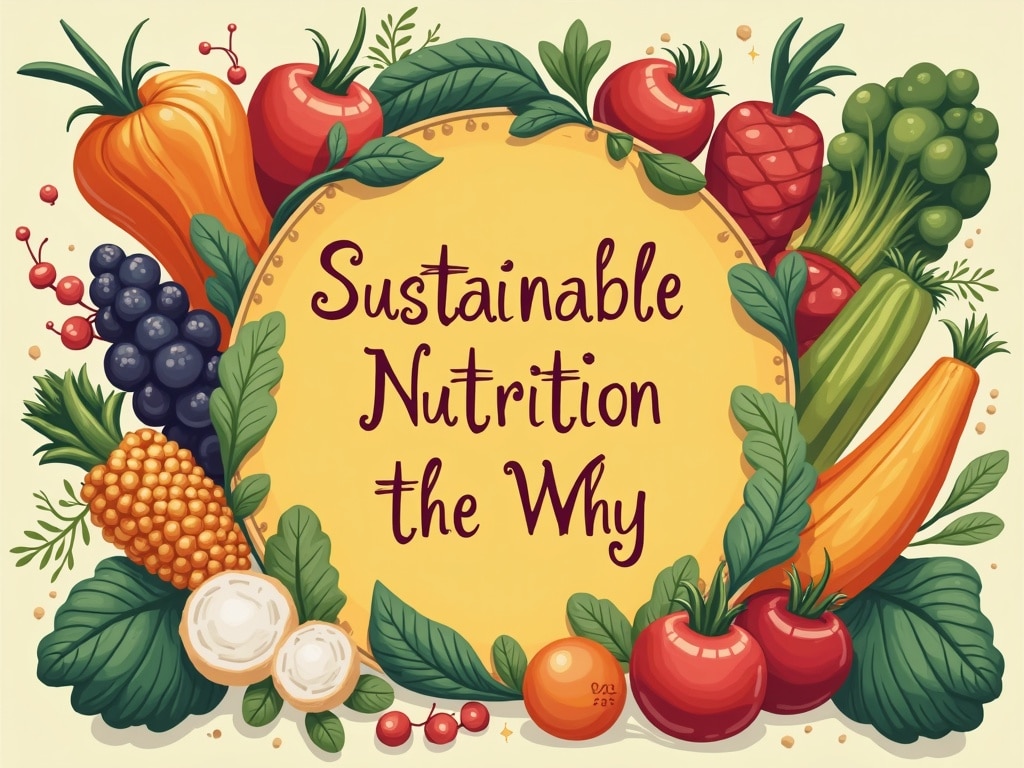How to Find Local Food Sources: A Guide to Sustainable Eating
Imagine biting into a sun-ripened tomato, bursting with flavor unlike anything you’ve ever tasted from a grocery store. Or picture a crisp apple, still bearing the faint aroma of the orchard where it grew. This experience isn’t just about taste; it’s about connecting with your community, supporting local farmers, and nourishing your body with food that’s both fresh and sustainable. Finding local food sources is a journey, one that leads to healthier eating habits, a smaller carbon footprint, and a stronger connection to the land around you. But where do you begin?
Why Choose Local Food?
Before diving into the how, let’s explore the why. Choosing local food isn’t just a trend; it’s a conscious decision with far-reaching benefits.
Environmental Impact
One of the most significant advantages is the reduced environmental impact. Food that travels long distances consumes significant amounts of fuel for transportation, contributing to greenhouse gas emissions and air pollution. Local food travels fewer miles, minimizing its carbon footprint. Furthermore, local farms often employ more sustainable farming practices, such as reduced pesticide use and soil conservation, which benefit the environment in the long run.
Economic Benefits
Supporting local food sources strengthens your community’s economy. When you buy directly from farmers, you’re putting money back into their pockets, allowing them to reinvest in their farms and create jobs within the community. This creates a more resilient and vibrant local economy, less reliant on large corporations and global supply chains.
Health and Nutrition
Local food is often fresher and more nutritious than food that has traveled long distances. Produce begins to lose nutrients as soon as it’s harvested, so the shorter the time between harvest and consumption, the better. Local farmers are also more likely to grow a wider variety of crops, including heirloom varieties that are often more nutrient-dense than commercially grown produce. Plus, you have the opportunity to ask them about their farming practices, ensuring that your food is grown without harmful chemicals.
Community Connection
Perhaps one of the most rewarding aspects of sourcing local food is the connection it fosters with your community. Visiting farmers markets, participating in CSAs, or even just buying directly from a local farm allows you to meet the people who grow your food and learn about their practices. This creates a sense of connection to the land and a deeper appreciation for the food you eat.
Where to Find Local Food Sources
Now that you understand the benefits, let’s explore the various avenues for finding local food in your area.
Farmers Markets: A Vibrant Hub
Farmers markets are a cornerstone of the local food movement. These bustling marketplaces offer a wide array of fresh produce, meats, cheeses, baked goods, and other artisanal products. They provide a direct connection between farmers and consumers, allowing you to ask questions about how the food was grown or produced. Many farmers markets also feature live music, food demonstrations, and other community events, making them a fun and engaging way to spend a weekend morning.
Tips for navigating farmers markets:
- Go early. The best produce often sells out quickly.
- Bring cash. While some vendors accept credit cards, cash is still the preferred method of payment.
- Talk to the farmers. Ask about their growing practices, their favorite recipes, and anything else you’re curious about.
- Bring your own bags. Reduce waste by bringing reusable shopping bags.
- Be open to trying new things. Farmers markets are a great place to discover new and unusual fruits, vegetables, and other products.
Community Supported Agriculture (CSA): A Weekly Bounty
A CSA is a partnership between a farm and a community of consumers. Members pay a subscription fee at the beginning of the growing season and, in return, receive a weekly share of the farm’s harvest. CSAs offer a guaranteed market for farmers and a steady supply of fresh, seasonal produce for members. They’re a great way to support local agriculture and connect with the rhythm of the seasons.
What to consider when joining a CSA:
- Farm location. Choose a CSA whose pickup location is convenient for you.
- Share size. Consider how much produce your household can realistically consume in a week.
- Crop selection. Some CSAs offer more variety than others. Make sure the farm grows the kinds of fruits and vegetables you enjoy eating.
- Farming practices. Inquire about the farm’s growing methods. Are they organic? Do they use pesticides?
- Payment options. Some CSAs offer payment plans to make membership more affordable.
Local Farms and Farm Stands: Straight from the Source
Many farms sell their products directly to consumers through farm stands or on-farm stores. Visiting a farm allows you to see firsthand where your food comes from and connect with the people who grow it. Some farms also offer pick-your-own opportunities, allowing you to harvest your own fruits and vegetables.
How to find local farms:
- Use online directories. Websites like Local Harvest and Eatwild can help you find farms in your area.
- Ask around. Talk to your friends, neighbors, and local chefs. They may know of farms that aren’t listed online.
- Look for signs. Keep an eye out for farm stands and roadside signs advertising fresh produce.

Co-ops and Food Hubs: Aggregating Local Products
Food co-ops and food hubs are organizations that aggregate and distribute local food from multiple farms. They offer a convenient way to access a wide variety of local products in one place, often with online ordering and delivery options. Co-ops are typically owned and operated by their members, while food hubs may be for-profit or non-profit organizations.
Benefits of using co-ops and food hubs:
- Convenience. Access a wide variety of local products in one place.
- Variety. Support multiple farms with a single purchase.
- Accessibility. Some co-ops and food hubs offer delivery options.
Restaurants and Chefs: Supporting Local Farmers
Many restaurants are committed to sourcing ingredients from local farms. Look for restaurants that advertise their use of local produce on their menus or websites. Supporting these restaurants helps to create a market for local farmers and encourages more restaurants to adopt sustainable sourcing practices.
How to find restaurants that support local farms:
- Ask your server. Inquire about the restaurant’s sourcing practices.
- Look for certifications. Some organizations certify restaurants that meet certain local sourcing standards.
- Check online reviews. Read reviews to see if other diners have commented on the restaurant’s use of local ingredients.
Grow Your Own: The Ultimate Local Source
For the most direct connection to your food, consider growing your own fruits and vegetables. Even a small backyard garden or a few potted herbs on a windowsill can provide a surprising amount of fresh produce. Gardening is a rewarding hobby that connects you to nature and provides you with healthy, delicious food.
Tips for starting a garden:
- Start small. Begin with a few easy-to-grow plants.
- Choose the right location. Select a spot that gets plenty of sunlight.
- Use good soil. Amend your soil with compost or other organic matter.
- Water regularly. Keep your plants well-hydrated.
- Learn as you go. There are many resources available to help you learn about gardening.
Making Local Food a Habit
Finding local food sources is the first step; making it a sustainable habit is the key. Here are some tips to integrate local eating into your lifestyle:
- Plan your meals around seasonal produce. Use a seasonal produce guide to plan your meals around what’s fresh and available in your area.
- Visit farmers markets regularly. Make it a weekly ritual to visit your local farmers market.
- Join a CSA. Enjoy a weekly supply of fresh, seasonal produce.
- Cook at home more often. Cooking at home allows you to control the ingredients and ensure that you’re using local, seasonal foods.
- Get creative with leftovers. Use leftover vegetables in soups, stews, and stir-fries.
- Preserve the harvest. Learn to can, freeze, or dry your favorite local fruits and vegetables to enjoy them year-round.
Overcoming Challenges
Finding and accessing local food sources can sometimes present challenges. Here are some common obstacles and how to overcome them:
- Cost. Local food can sometimes be more expensive than food from the grocery store. Look for ways to save money by buying in bulk, joining a CSA, or growing your own food.
- Availability. Local food may not be available year-round. Learn to preserve the harvest to enjoy local food throughout the winter months.
- Convenience. Shopping at farmers markets or visiting farms can take more time than shopping at the grocery store. Plan ahead and make it a fun outing.
- Information. It can be difficult to find information about local food sources. Use online directories, ask around, and connect with your local food community.
The Future of Local Food
The local food movement is growing, and with it, new technologies and innovations are emerging to make local food more accessible and sustainable. From online farmers markets to vertical farms, the future of local food is bright. By supporting local farmers and embracing sustainable eating habits, we can create a healthier, more resilient, and more connected food system for generations to come.
So, take the first step. Explore your local farmers market this weekend. Research CSAs in your area. Visit a local farm and connect with the people who grow your food. You’ll be surprised at the abundance and diversity of fresh, local food that’s available right in your own backyard. Not only will you enjoy the delicious flavors of the season, but you’ll also be contributing to a healthier planet, a stronger community, and a more sustainable future.
